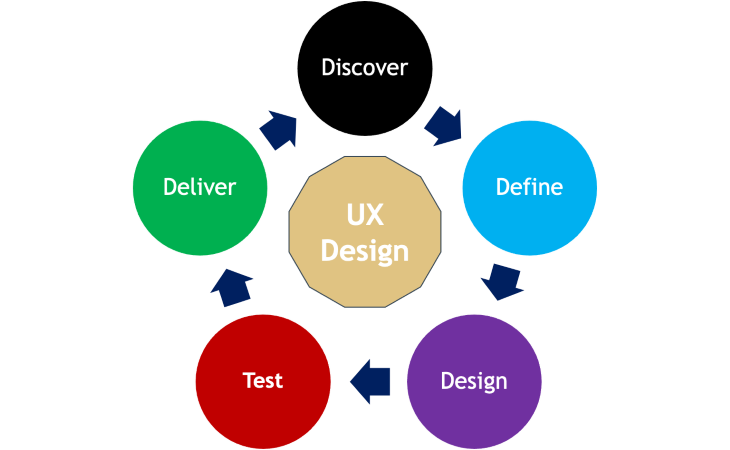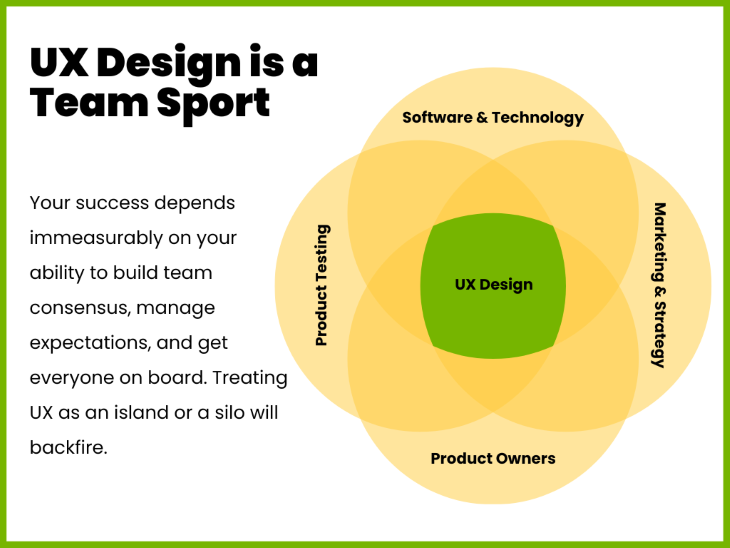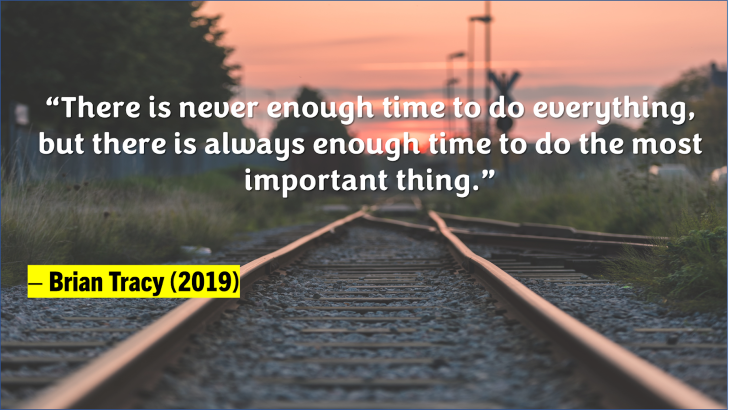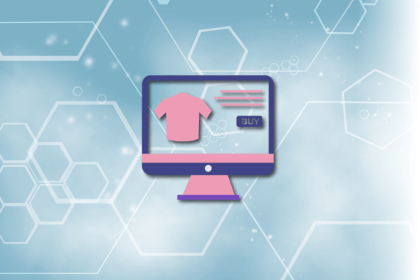Meet Michael McNamara, a young, ambitious UX researcher/designer in the medical device industry. Michael developed many customer journeys, did usability studies, conducted clinics, ran surveys, and prepared shiny decks for the management. He understands his customers well.

Together with his team, they developed what they thought was an ideal solution for their product, which has yet to go through the company’s vetting process. Aligning the visions of all teams is, however, not a given. Eleven months in, the project stalled.
What could have gone wrong? What may have stood in the way of the final product? What can teams and individuals do to achieve success and avoid failure?
The UX design socialization process was conceptualized to answer these questions.
Technological, biological, or cognitive systems start as a design, a cell, a seed, a germ, an embryo, or a thought that gathers moss and morphs into something bigger than itself. This growth occurs because different actors or factors contribute their input and shape its development trajectory.
Apply this general principle to UX design, and you can draw a diagram similar to what you see below. This diagram traces how a design moves from point i, its initial, basic shape (UXDi), to what it transforms into by the end of the process (UXDt). It is a team-constructed product, a body, or a unit with features representative of the various teams involved in its inception, development, maturation, and, eventually, deployment.

We know, however, that optimal conditions only obtain in lab-like conditions where strict parameters are applied to quantities, weights, sizes, and sequences. The UX stratosphere is nothing like the ideal in an absolute sense. Complex UX projects, by nature, involve hurdles, unknowns, and uncertainties. Come to terms with the idea that your success depends on your ability to adapt, thrive, and find your voice in what could sometimes be a highly-unstructured environment.
To be sure, the UX design team expects every team with a stake in the success of the design to approach the task in good faith. That says something about the value of cooperation and the cooperation principle. More on this later.
Socialization happens between the point where the design is somewhat raw and where it bears the collective teams’ seal of approval. Different teams measurably contribute their input to the process, resulting in a beautiful, happy, fulfilled, and fun-filled baby. Did I just say “baby”?
As a concept, socialization is at the intersection of sociology, psychology, anthropology, and education. Kuczynski defines socialization as a process of “learning skills, behavior patterns, ideas, and values needed for competent functioning in the society in which a child is growing up.” Technically, the onus of child socialization falls on the parents, guardians, or caretakers. Still, input from other contributors remains essential: extended family, the school, and other social institutions.
Here, I am migrating the socialization metaphor from child development into UX product design. In both cases, there is a genesis, a maturation process, input from many sources, and, hopefully, a happy outcome that the children (or in other words the products) we design are useful, lovable, and successful.
Between the design and the desired outcome, however, is many a slip. Aspirations, wishlists, and protocols do not always equate to success. Why? We may have to rethink the notion of success and separate it from what is ideal, consummate, and ticks all the boxes.
Dan Norman, the author credited with the coinage, says, “… good design fits our needs so well that the design is invisible, serving us without drawing attention to itself.” Its journey, from ideation to delivery, is iterative, and no step is expendable or optional. Almansy captures the process in several stages: Discover, Define, Design, Test, and Deliver.

The UX Design process (based on Almansy)
Following the UX Design process verbatim is no guarantee of success. What’s missing is a full-fledged socialization process with your stakeholders.
This process needs to unfold without ever losing sight of UX centricity. Along the design and delivery trajectories, processes need to converge, wed, and sync. The outcome of this union will be a team-approved, implementable design.
In UX design parlance, this is likely your Minimum Lovable Product (MLV). You and your partners shall rally around your MLV as a joint call. Think you and your partners can deliver more than the MLV as a start? More power to you!

Before we continue, let’s get some terms important to design socialization out of the way.
Thankfully, the very premise of conducting a UX design socialization process that is perfect or ideal is erroneous from the word go. Otherwise, we will have ceased long ago from improving our primitive hunting tools, ball-point pens, manual-wind watches, screen resolutions, compasses, other navigation systems, etc. The search for the perfect solution is not how humanity progresses. Progress is incremental, cumulative, and painstaking.
Secondly, keep in mind that product development is a messy business. However, certain foundational features or attributes must remain front and center throughout the socialization process.
Here comes your savior: the Minimum Lovable Product (MLP)! de Haaff presents MLP as “an initial offering that users love from the start. It represents the minimum that is required for customers to adore a product, rather than merely tolerating it.”

In his article titled, “What the hell is a minimum lovable product? And why should designers care?”, Babich defines MLPs as products that “not only meet users’ needs but also delight them.” To sell the users the product, they must fall in love with it, feel good about it, and be emotionally engaged with it.
To reach that sweet spot, stakeholders need to converge on interpreting the product data, and such convergence requires that they empathize, cooperate, engage in candid conversation, and be willing to take constructive feedback.
At a minimum, the cooperative principle means that teams working on a project need to recognize that to achieve a felicitous end in a conversation on a product, a design, or strategy, or just a regular encounter, they must minimally hold a common purpose and a mutually agreed direction.
There are, however, no guarantees that all stakeholders share this mindset. Realistically, the expectations of a common purpose and an agreed course of action can be easily violated, and the cooperative principle can easily fall by the wayside.
Collaborating involves navigating time crunches, budget limits, legal constraints, technical constraints, capital caps, and ego trips. It also requires a company culture that privileges consensus making, deal breaking, and rallying around the customer, first and foremost.

As a corollary to the cooperative principle, when teams or individuals within the organization stick to their guns and allow little or no wiggle room regarding their needs and expectations, the proposed UX solution suffers under its own weight and is overburdened with features.
Let’s get to the bottom of it. How can a UX team successfully do their part to move a product from concept to final market launch and beyond? How do they not stand in the way of product socialization?
In UX design, user-centeredness and effective cross-functional team collaboration take precedence. These two foundations hide much behind them. Here are a few pointers to success:
Essentially, we have painted a picture of successful UX design as realistic and not self-defeating. Be human-centered all you like but understand that overcharging a design with specs is self-defeating. Derive your MLV through knowing yourself, knowing others, treating them as partners, seeking actionable input, and keeping your customers sweet.
Beyond UX skills, you need to borrow a page of the book of organizational behavior, build bridges, control your blind spots, learn to compromise, and grow your knowledge.
Now back to Michael. Michael may own the product experience, but behind him is a team, and behind them is a company with finite human and financial resources that they need to deploy judiciously. Pain points along the product’s incubation process must have remained unresolved. These may be not only technical or structural but also psychological and organizational. It is possible that the UX design socialization process was less than mature, thus leading to delays and slippages in delivery.
LogRocket lets you replay users' product experiences to visualize struggle, see issues affecting adoption, and combine qualitative and quantitative data so you can create amazing digital experiences.
See how design choices, interactions, and issues affect your users — get a demo of LogRocket today.

Designing for enterprise isn’t just about looks — it’s about making complex workflows easy. Here’s how to do it right.

When familiar patterns start to feel stale, these seven ways will help you revive your design inspiration and to create standout user experiences.
Here’s the lowdown. Scaling icons properly keeps them crisp and clear on any screen size. I talk more on this in the blog.

Brands like Amazon and Walmart have a product page design that sells itself. In this blog, I analyze how they do it and what you can learn from them.